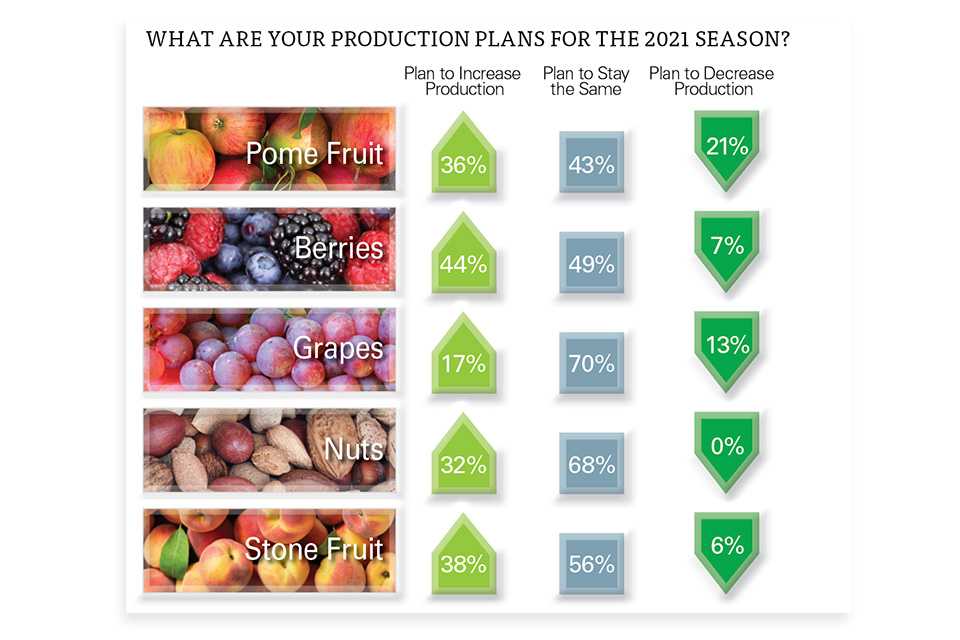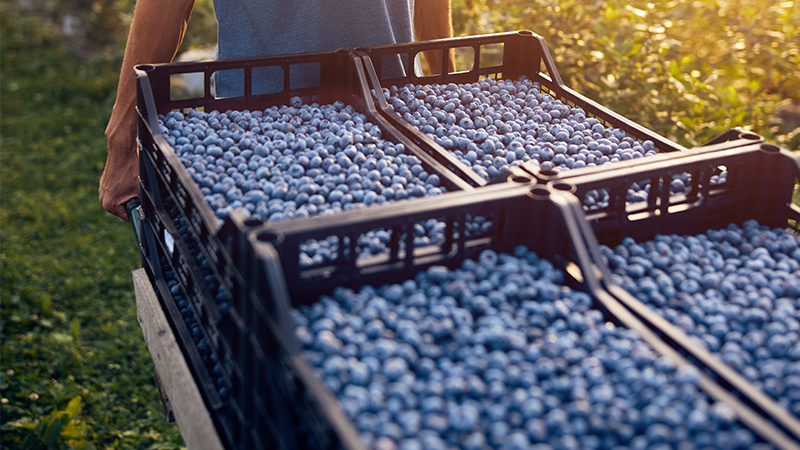What Fruit and Nut Growers Are Feeling Headed into a New Year

Crop production plans? Here’s what you told us for this year’s State of the Fruit and Nut Industry survey.
2020 was such a lousy year, it is no surprise some fruit and nut growers responding to American Fruit Grower® and Western Fruit Grower® magazines’ State of the Industry survey leaned to the negative. But that feeling is far from unanimous, and there’s no doubt smaller, direct-market growers responding to the sixth annual survey were generally more positive than larger, wholesale growers, reflecting the relative impact of COVID-19.
One statistic in particular illustrates this dichotomy. We asked how growers’ 2020 production compares to their 2019 production. Because of the pandemic, it would have been understandable to see that 31% say their business was down more than 10%. But nearly as many, 27%, say their production is actually up more than 10%. Most years we have seen those results bunched much more in the middle, but not in 2020.
As for production plans, grape and nut growers appear to have sustained a particularly rough 2020. But that was probably due at least as much to huge crops and attendant lower prices as it was to the pandemic. Stone fruit growers are more optimistic than they have been in years, and berry growers keep sailing along, with a solid 44% expecting to increase production in 2021.
Over the rest of the course of this special issue, we’ll present what is on the minds of your fellow growers. You’ll find reports on all five of the crop types we cover in every issue — grapes, berries, nuts, and pome and stone fruit — along with such topics as precision agriculture and crop protection.
Here’s a brief look at some of the other issues that drew the most comments from growers.
COVID-19: Growers enthusiastically respond to the survey when asked what issues the coronavirus caused for the business, and what strategies they implemented that proved effective when dealing with those issues.
One larger grower says: “Had a COVID outbreak among our workers just after arrival from Mexico. So we were down one-third of the crew the first 10 days, then another one-half of the crew, then the rest of the guys got sick. Strategy was to keep them away from those of us who don’t live in the H-2A housing. No spread to anyone else, so success.”
One direct-market grower reports: “We didn’t run our hayride this year and had everyone walk for pick your own. We ran our stand like a deli where people didn’t touch the fruits and vegetables until after they purchased them. Most people understood and even appreciated the temporary changes for safety’s sake.”
Another reports an even tougher experience: “Shut down at our busiest time of the year. We were able to switch and sell more direct via mail order; we didn’t sell the same volume but were able to keep everyone employed. Some varieties got dropped to the ground.”
Finally, one grower says succinctly: “PPP (Paycheck Protection Program) loan saved my business.”
GMO Crops: Despite the fact 13 million pounds of genetically modified apples were harvested in the U.S. (Washington state) this past year, grower resistance to GMO crops has not abated. When asked if they would produce a GMO crop if one was available to them, 52% say “no,” up from 49% last year.
Representative comment on the anti side: “Not until the public is educated on the subject — that there is no risk to them.”
On the pro side: “It depends whether there is any other alternative. For example, it appears that a GMO alternative may be necessary to save the citrus industry from HLB.”
Climate Change: When asked if they believe in man-made climate change, 60% say “yes,” the first time to hit that high a number in the survey and up from 54% in 2020. As usual, the issue is controversial, attracting more than 100 comments. Sample pro comment: “Because the science has proven that human activities have directly increased CO2 and other greenhouse gases. There is no free lunch. There has to be an effect from this dramatic adjustment to the Earth’s atmosphere.” Sample anti comment: “I don’t think climate change has been proven to be man-made. The climate is always changing. It always has and will continue to change.”
Check back to see more of the 2021 State of the Fruit and Nut Industry Survey broken down by crop and production segments.









